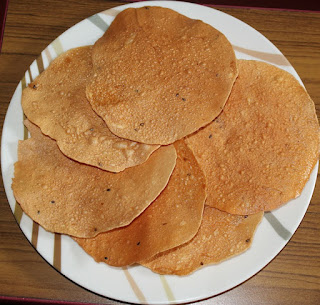Recipe for crispy deep fried South Indian Karnataka
Mangalore Bonda / Goli Baje - Bajji. This Maida bonda made with curd can be put
together in minutes.
INGREDIENTS
1½ cups All purpose flour / Maida
¼ cup Rice flour
1 teaspoon Salt
¼ teaspoon Asafoetida
1 teaspoon Crushed Pepper
1 tablespoon finely minced Ginger (1 inch piece)
2 sprigs Curry leaves, finely chopped
¼ cup chopped Coriander leaves (about 10 stalks)
2 Green Chillies, finely minced
1 tablespoon Sugar
1.5 - 2 cups Yogurt
¼ teaspoon Baking Soda
Oil for deep frying
INSTRUCTIONS
Measure 1.5 cups of all purpose flour / maida and ¼ cup of
rice flour. This little amount of rice flour helps in crisping. Add in the
salt, asafoetida and crushed pepper.
Add in very finely minced ginger, finely chopped curry
leaves, finely chopped coriander leaves and finely minced green chillies. I
also add a tablespoon of sugar. This small addition of sugar helps in browning
of the bondas. Add in 1.5 cups of yogurt / curd and beat well to form a smooth
batter.
Add more yogurt if necessary to form a thick batter. Keep beating for
couple of minutes until a very smooth, thick batter is formed. Rest the batter
for 30 minutes up to an hour.
Once the batter has been rested, add in ¼ teaspoon of baking
soda and mix thoroughly. It should be a thick batter.
Heat oil in a kadai until medium hot. Add a small piece of
the batter to check if the oil is ready. The oil is ready if the batter floats
immediately to the top. If not wait for a minute more. Add in small scoops of
the batter to the oil when the oil is ready.
Keep turning the batter balls so the batter cooks evenly on
both sides. I use a fork to turn the batter. It works so well. Deep fry until
its golden. Remove and drain on paper towels.
This Mangalore Bonda has to be served hot. It loses its
crispness when it cools.
























